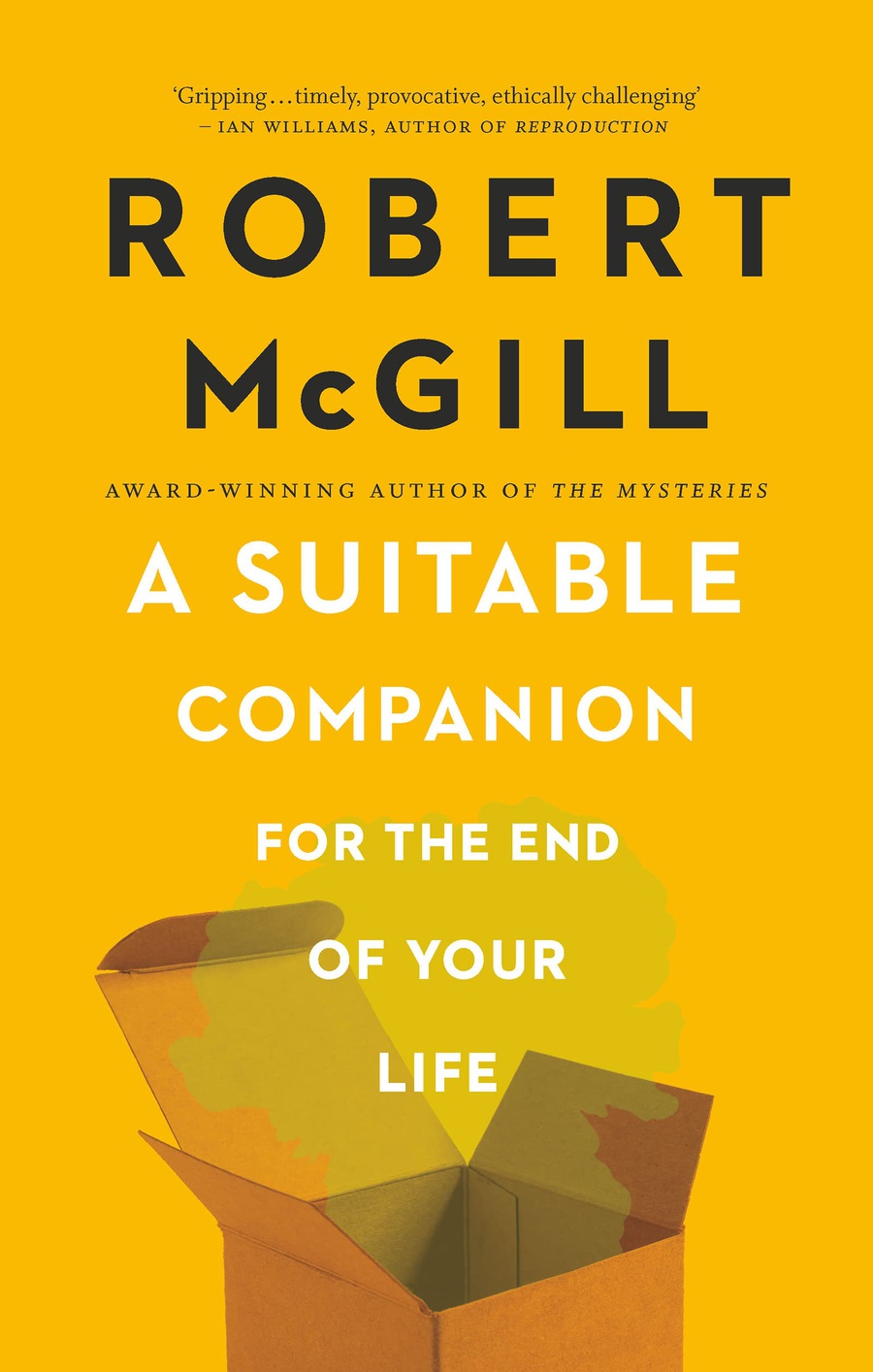Q&A for A Suitable Companion for the End of Your Life
Q: How would you summarize your novel in one sentence?
At a time when a process known as flatpacking has saved the lives of people infected with a deadly parasite ravaging Europe, an eighteen-year old named Regan on the American side of the Atlantic finds herself responsible for the life of an amnesiac flatpacked woman, Ülle, even as they’re threatened by the shadowy organization that brought them together.
Q: How would you describe A Suitable Companion for the End of Your Life in terms of genre?
It has elements of speculative fiction and thrillers—there’s a high-stakes, escalating situation—but it also has comic moments. And fundamentally, it’s about ordinary people trying to care for themselves and each other.
Q: For you, what’s the attraction of writing a novel that has speculative, even surreal elements?
I don’t think I’m alone in feeling that real life is increasingly bizarre: we’ve had a reality-TV star as the US president, we’re in the third year of a pandemic, and human activity has caused the weather to change. The world is science fiction; we struggle to keep up. We assimilate the weirdness, but it takes a toll. Non-realist literature—science fiction, fantasy, horror, satire, the absurd, etc.—has a role in helping us to appreciate the weirdness of the world as weird again, and in new ways.
Q: Where did the idea for flatpacking people come from?
A while back, a mattress I’d ordered arrived flattened and rolled up in a box. The instructions said that after being unrolled, the mattress would take 48 hours to decompress. For the next two days, I went around wondering how the mattress was doing, like there was a stranger in the bedroom slowly coming to their senses.
That made me think about how we’re in a time when we’ve embraced the convenience of ordering goods online and having them delivered, but when borders are often closed to people. I began to wonder: what if human beings were sent around the world in the way that things are?
Q: In the novel, the flatpack process leads to lethal off-gassing. How did you come up with that idea?
As a teenager, I once visited my grandmother at her mobile home in Florida and got very ill not long after arriving. I didn’t feel better until I left her place for a few days to visit other parts of the state. Then I went back to her place and almost immediately fell ill again. Later, I learned that people can be allergic to certain off-gassing construction materials. The idea that things can make you sick through mere proximity stayed with me.
In the novel, the off-gassing from flatpacked people is dangerous, but it’s also something that various characters exploit in unexpected ways. I’m fascinated by the way in which people find off-label uses for things, and I wanted to explore how that might happen with something like off-gassing.
Q: You said that A Suitable Companion for the End of Your Life deals with caregiving. How do you address that subject?
I began by thinking about the long history of stories about female figures created to serve as helpmates for men, from Eve in the Bible through to robots and AIs in recent movies. Often, these stories suggest that the female figure is less than fully human. But in the Bible, the word that the King James version translates as “helpmate,” and which is often understood to mean “helper,” actually means something closer to “complementary companion of corresponding strength.” Imagine how different modern gender relations might be if the translators had used that phrase, instead.
With A Suitable Companion for the End of Your Life, I wanted to tell a story focusing on two characters who are equally human and whose caregiving relationship is complicated. In the novel, that relationship between Regan and Ülle keeps changing. As I wrote the novel, I was thinking about questions like: What implicit pacts do we enter with other when it comes to care? What does it mean that there are power imbalances in many caregiving relationships, and that people in those relationships are so vulnerable to each other, often in highly asymmetrical ways?
Q: The novel begins with Regan literally sealing herself in her house. The situation’s reminiscent of lockdown life. And there’s a pandemic in the story! Were you responding to COVID-19?
Actually, I finished drafting the novel just before the coronavirus hit. And I should note that the pandemic in the novel involves a parasite, not a virus. Still, it felt uncanny when things I’d depicted started happening in real life: people wearing masks, controversial treatments—and yes, there’s Regan alone in her house.
For me, what’s striking about her situation is that even before COVID-19, life felt increasingly like it was encouraging people to stay at home. Why go shopping when you can order online? Why go to the cinema when you can watch a movie on your phone? Why visit people when you can use Facetime? I was interested by our complicity, even our eagerness, with respect to technology keeping ourselves apart from each other physically. I was also interested by the ways in which, even as the internet has broken down certain kinds of borders, others—including national borders—continue to have big impacts on our lives. So those borders play an important role in the novel, too.
